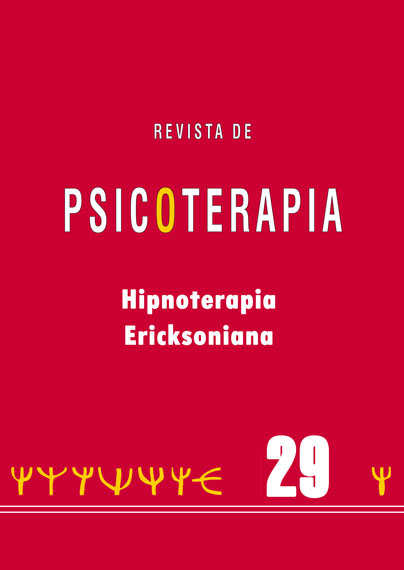Use of paradox in hypnosis and family therapy
DOI:
https://doi.org/10.33898/rdp.v8i29.1013Keywords:
hypnosis, Erickson, family therapy, paradox, psychotherapyAbstract
The author carries out a study about paradoxical interventions in the frame of family therapy and the ericksonian model of psychotherapy. A new perspective over the concept of resistance in psychotherapy is given.
Downloads
Downloads
Published
1997-03-01
How to Cite
Loriedo, C. ., & Vella, G. (1997). Use of paradox in hypnosis and family therapy. Revista De Psicoterapia, 8(29), 83–92. https://doi.org/10.33898/rdp.v8i29.1013
Issue
Section
Monographic Articles









